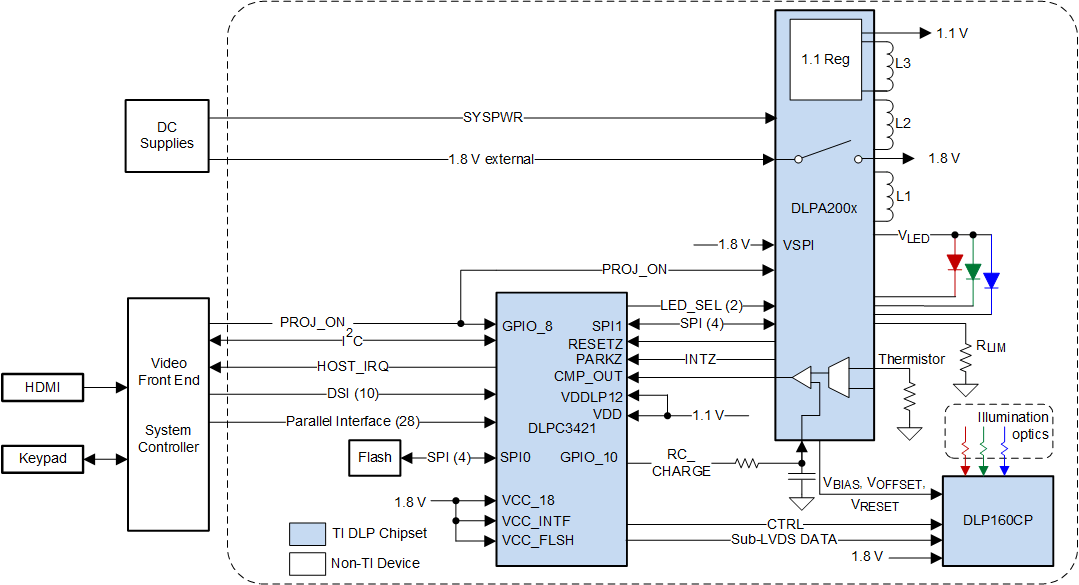DLPS228D October 2021 – October 2024 DLP160CP
PRODUCTION DATA
- 1
- 1 Features
- 2 Applications
- 3 Description
- 4 Pin Configuration and Functions
-
5 Specifications
- 5.1 Absolute Maximum Ratings
- 5.2 Storage Conditions
- 5.3 ESD Ratings
- 5.4 Recommended Operating Conditions
- 5.5 Thermal Information
- 5.6 Electrical Characteristics
- 5.7 Timing Requirements
- 5.8 Switching Characteristics
- 5.9 System Mounting Interface Loads
- 5.10 Micromirror Array Physical Characteristics
- 5.11 Micromirror Array Optical Characteristics
- 5.12 Window Characteristics
- 5.13 Chipset Component Usage Specification
- 6 Detailed Description
- 7 Application and Implementation
- 8 Power Supply Recommendations
- 9 Layout
- 10Device and Documentation Support
- 11Revision History
- 12Mechanical, Packaging, and Orderable Information
7.2.1 Typical Application—nHD Mode
A common application when using the DLPC34xx controller with the DLP160CP DMD and the DLPA200x PMIC/LED driver is to create a Pico projector embedded in a handheld product. For example, a Pico projector may be embedded in a smartphone, a tablet, or a camera. The controller in the Pico projector embedded module typically receives images from a host processor within the product.

Figure 7-1 Typical Simplified Application Schematic—nHD Mode (Using DLPA200x)